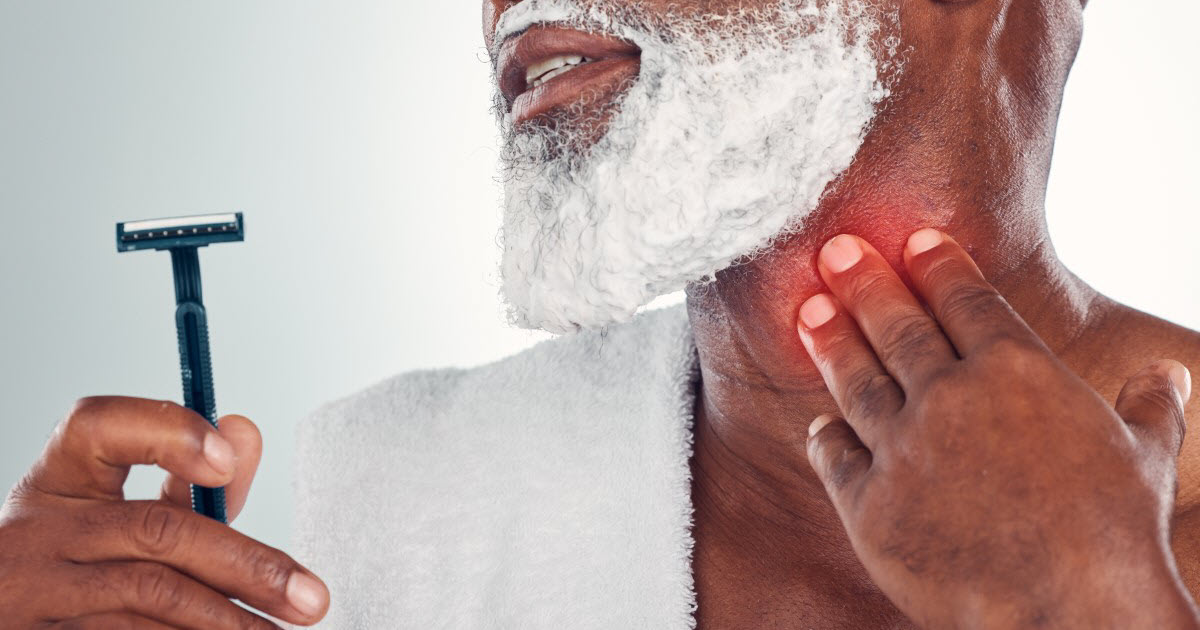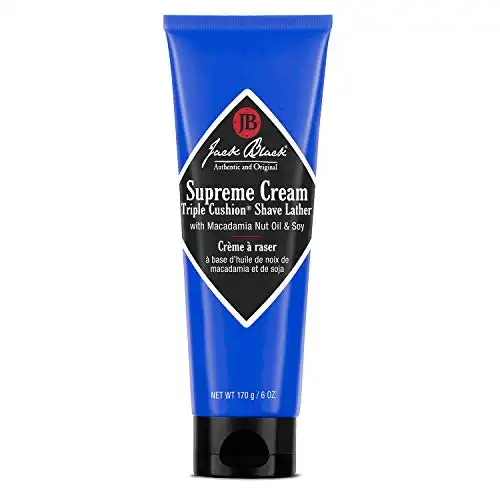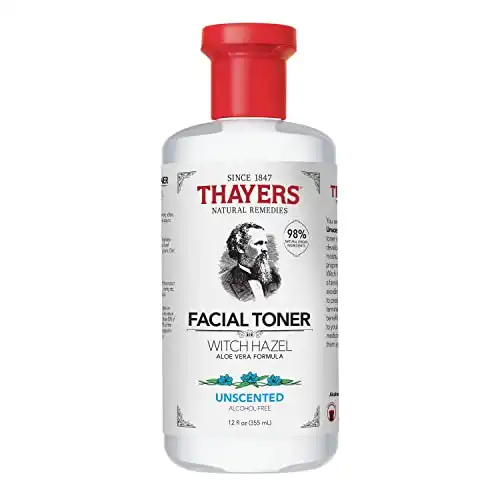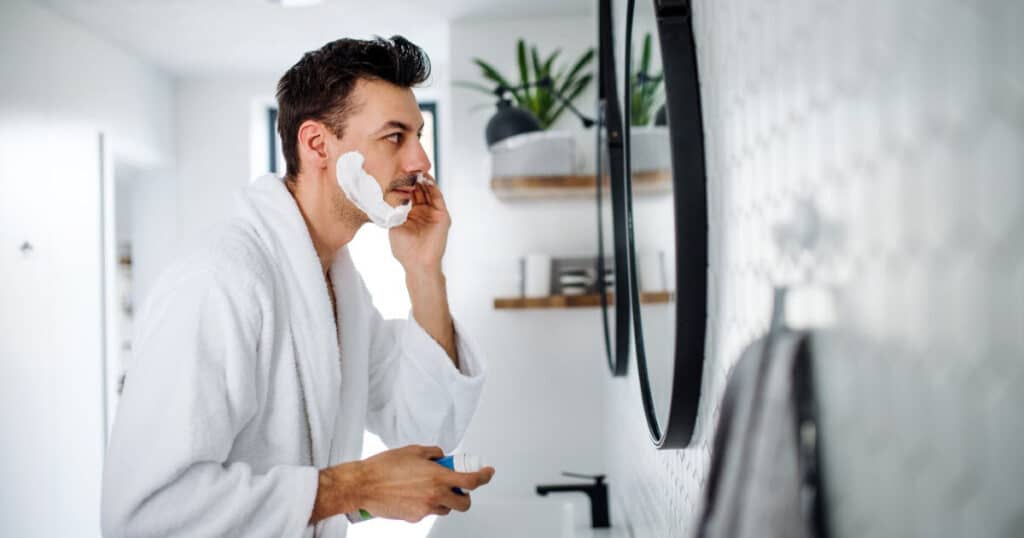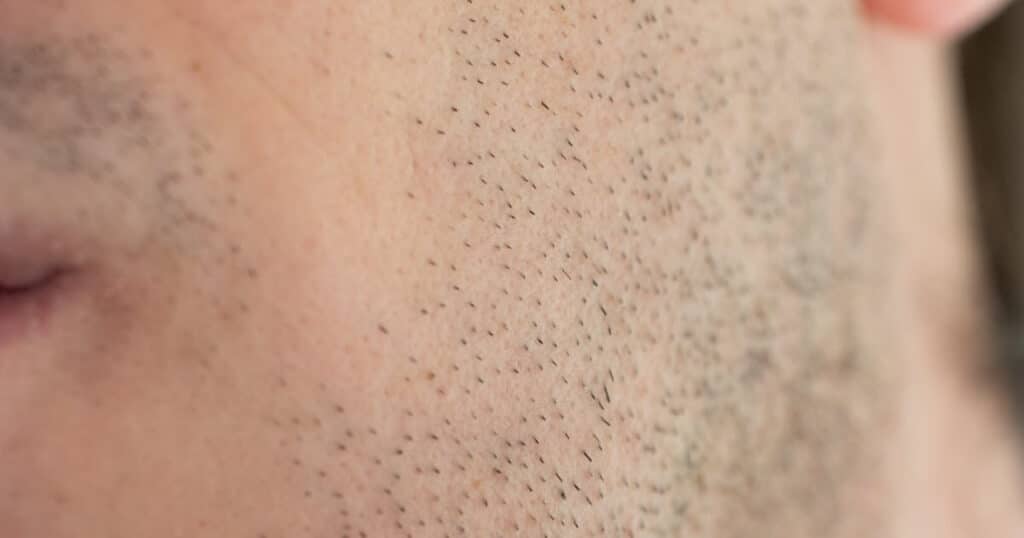If you have sensitive skin after you shave (for example, you struggle with a burning or raw sensation), you probably have razor burn. That’s why you need to know how to prevent razor burn when shaving your face. This is a common issue for men, and there are many good, natural products out there which can help you avoid razor burn when shaving.
In today’s article, I’ll discuss the cause of razor burn, and explain specific actions you can take to prevent razor burn when shaving your face in the future.
Let’s get started.
Understand the Cause of Razor Burn
One of the most important steps to stopping razor bumps from happening is just figuring out why your skin is getting bumpy. It mostly occurs whenever the skin gets irritated due to contact with the razor blade, but newly shaved hairs growing into the skin instead of out of it can cause ingrown hairs that irritate your skin for days.
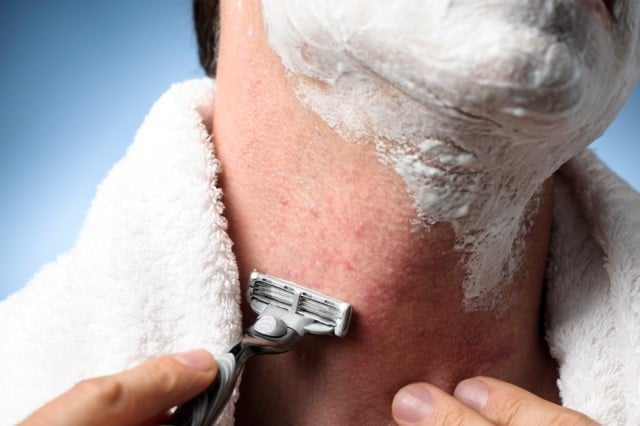
Every man is different, and every face is different. What causes razor burn on one man may not on another. But some of the most common causes of razor burn include:
- Shaving too quickly
- Over-shaving an area
- Shaving without a proper lubricant
- Using a shaving product that irritates your skin
Avoid doing these things so that you cut down on your risk of ending up with razor burn.
Pick the Right Type of Razor
The standard disposable cartridge razor is almost never a good idea. The multiple blades passing over your skin tend to tug and irritate it, and cartridge razors tend to be rather dull.
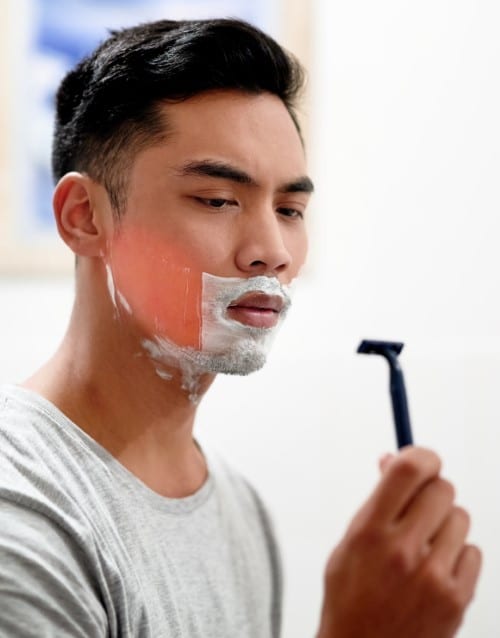
The best razor will be one that is sharp enough to remove hair in a single pass and one that you are comfortable using. A classic double edge safety razor is normally the best option for preventing ingrown hairs.
Only one blade goes over the skin with each pass, reducing the risk of irritation. Another advantage of a safety razor is that you can change blades very often.
Shaving with a very sharp razor blade is one of the best ways to avoid razor burn. However, keep in mind that you can still get razor burn if you do not know how to use a safety razor properly.
If you tend to end up cutting yourself when you use classic razors, an advanced electric shaver may be the best option.
Warm and Moisten Your Face Before Shaving
Properly preparing the surface will go a long way towards preventing razor burn. The hair in your beard will become softer and easier to cut when it is wet because hair absorbs water.
Adding some heat to the process will increase blood flow to the area, making your face swell slightly and create a smooth surface for the blade to go along.
There are two basic methods you can use that essentially achieve the same thing:
Method 1: The Hot Towel
To use this method (a staple at any top-notch barber shop), gently rinse your face with warm water and then wrap a warm, slightly damp towel around your face.
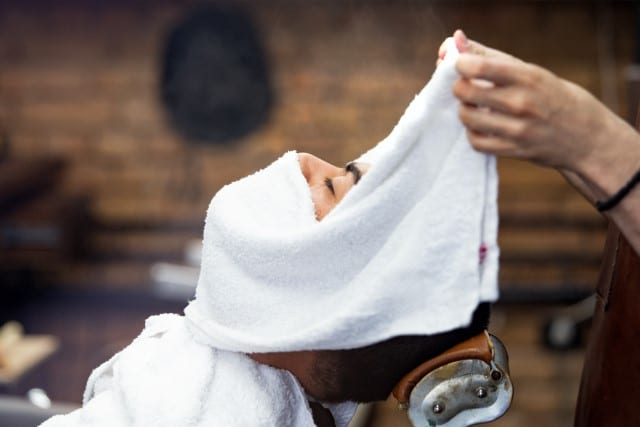
Leave it on for a few minutes before continuing with your shave.
Method 2: The Shower
Of course a relaxing hot towel soak before every shave sounds classy and luxurious, but if you are like most men, you probably do not have time to do be doing that every morning.
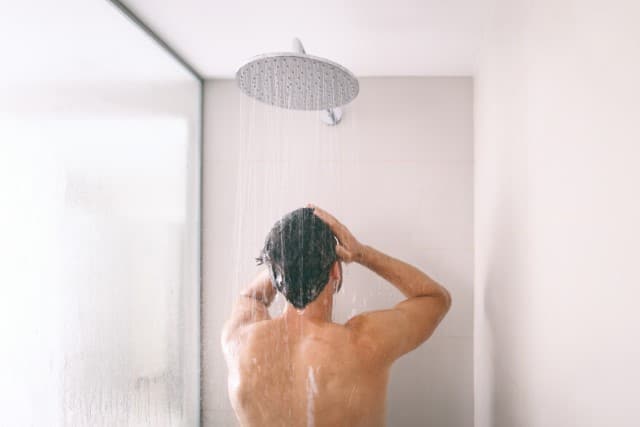
Fortunately, a basic part of your morning routine can stand in for a hot towel. Take a warm shower of at least five minutes before you shave, and the steam will make your beard hair soft and flexible.
Take Time to Exfoliate the Face
Most men think exfoliating is just part of a feminine facial, but if the Art of Manliness is also recommending it, you can be confident that it really works.
Exfoliating isn’t just to create a smooth, delicate surface to your face. Its primary function is actually removing dead skin cells that could clog the surface of your skin and cause more ingrown hairs.
When exfoliating before a shave, you have the option of using a physical or chemical methods. Physical methods use force to remove the dead skin cells, so this category includes things like using a textured loofa or a face scrub.
Chemical methods are products that contain glycolic acid, alpha hydroxy acid, or other mild acids that loosen dead skin cells.
Apply a Shave Oil Before You Shave
Many men put an oil on their beard after they shave, but RealMenRealStyle recommends that you put the oil on before you shave instead.
This helps to lock in moisture in each beard hair before you shave. The softened hair can easily be sliced by the razer without requiring you to put a lot of pressure on the skin and tug on it.
The shave oil also provides extra lubrication, reducing friction and irritation while you shave.
A nice benefit of putting on the shave oil before you shave is that most of it will be washed out during the shave, so your skin will not look oily.
Clean Your Blade At the Start of the Shaving Process
Though most razor burn is due to irritated skin, it can also be caused by minor infections. Even the smallest break in the skin can turn red and inflamed if bacteria gets in it.
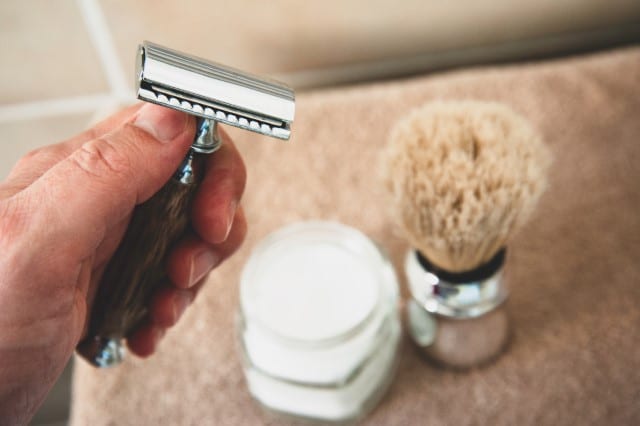
You can go ahead and stop this from happening before it starts by cleaning your blade before you begin shaving. A simple swish with rubbing alcohol will kill off any nasty germs before they cause a problem.
Use a Brush and Proper Shaving Cream
Instead of an inferior product pushed out of a can, select a high quality shaving cream with plenty of lather. Look for an option that contains both lubricants and moisturizers, and select a fairly thick cream that will help to hold the hair upright so it can be cut easily.
"For sensitive skin, this hydrating lather is the best we've ever used. We highly recommend it." - RTG Editorial
Gents, we are reader supported. If you click on a link we may shave a small commission at no additional cost to you.
Applying shaving cream with your hands can often lead to small patches between hair where the cream does not actually reach. A traditional badger brush will help to evenly coat each part of your face with a rich lather of shaving cream.
Learn the Right Way to Shave
A lot of men tend to shave against the grain with long strokes and several repeated passes of the razor against the same area of skin. This common shaving habit is actually the worst thing you can do when shaving.
Shaving against the grain increases the chances of getting ingrown hairs, and long strokes tend to put too much pressure on the skin. Repeatedly shaving the same area will just further increase skin irritation.
The best way to shave is to shave once going with the grain of the hair. Use even, light pressure and short strokes to remove the hair.
If you want a closer shave after this, rinse your face, apply cream again, and then shave sideways in the direction your hair grows. A second shave allows for a close shave while giving skin a quick chance to rest between your shaves.
Regularly Rinse the Blade While Shaving
Another problem with long passes of the blade is that it gets clogged up easily with beard hairs and shaving cream. Any debris left on the razor will make it harder for it to cleanly slice off hair with each stroke.
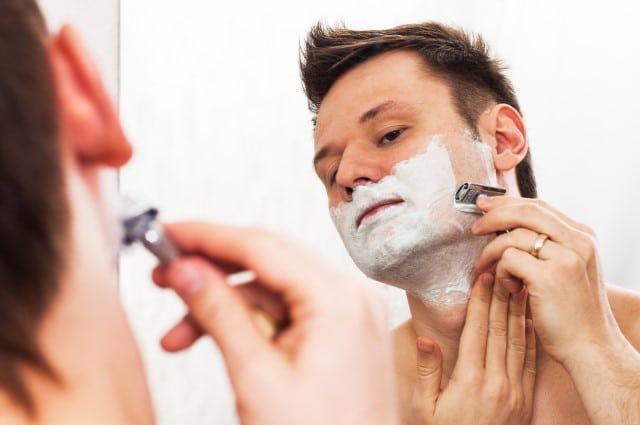
You might find yourself pressing harder to compensate for this which can lead to irritated skin. For best results, rinse off your blade after each pass of the blade.
If you do not have time to do this, try to at least make the effort to clean the blade whenever it looks full.
Wash Your Face With Very Cold Water
Though you might want to use hot water during the shave, always finish off with the coldest water possible. Cold water reduces blood flow to the area, so it cuts back on inflammation and redness after a shave.
If you have nicked your skin, the cold water will help to reduce bleeding. Be sure to gently pat your face dry instead of rubbing it with a towel. Remember, your skin is quite sensitive following shaving.
Use a High Quality Aftershave Product
An aftershave product works to both moisturize and clean the skin. Alcohol-based aftershaves might provide a tingly and refreshing feeling.
However, they’re actually rather drying and irritating to the skin.
If you want something antiseptic to fight off any lingering infection risks, select a product with witch hazel. This kind of aftershave will fight germs while still offering moisture.
Your main focus in an aftershave balm should be moisturizing.
A soothing moisturizer will help to refresh the skin and cut down on the chance of irritation. If you suffer from post-shave redness, select an option with aloe vera or cortisone.
There are plenty of post-shave products on the market. You can even pick ones specifically designed to stop razor bumps or pimples, if it is a big problem for you.
Store Your Razor Properly Afterwards
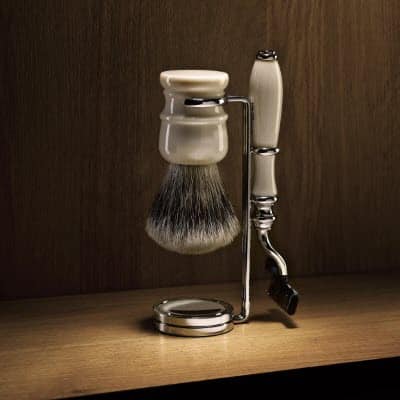
One of our favorite tips comes from WikiHow which suggests that men dip their blade in rubbing alcohol once they finish shaving. This helps to prevent dulling from mineral crystal buildup.
Instead, the rubbing alcohol displaces the water and evaporates without leaving a trace.
Doing this step will keep your blade sharp for a longer period of time. This comes in handy if you want to reuse it.
How many times you can use a blade will vary depending on certain factors.
In most cases, you should switch out your blade every two to six uses, and if you’re using a safety razor when wet-shaving, we have a list with some of the best replacement blades you can buy.
Final Thoughts: How to Prevent Razor Burn When Shaving Your Face
Now you know what causes razor burn. You also understand the simple and easy things you can do to prevent this common problem.
Guys with sensitive skin are particularly prone to getting razor burn, so if you have that skin type, you’ll have to be especially careful. Follow all the tips that I’ve provided today to help you keep your skin irritation free throughout and after the shaving process.
And before you take off, learn more about razors. Check out my guide to the different kinds of razors.
Michael Morris is the head writer here at Rough and Tumble Gentleman. He's got a ducktail beard and loves Brazilian jiu-jitsu. He's married to the woman of his dreams and lives in Brooklyn, NY.

